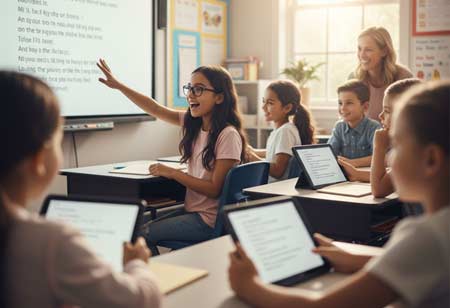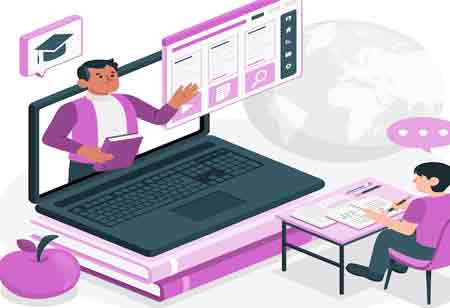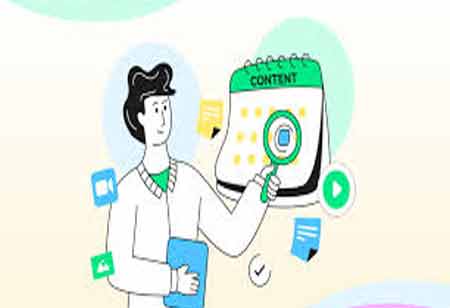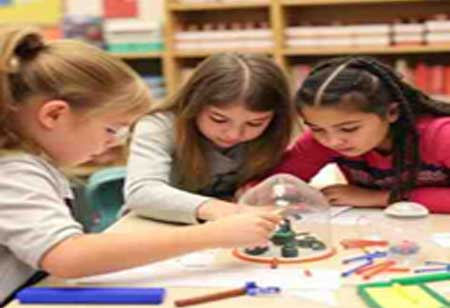THANK YOU FOR SUBSCRIBING
Be first to read the latest tech news, Industry Leader's Insights, and CIO interviews of medium and large enterprises exclusively from Education Technology Insights
Best Resources to Support Blind Students in Education
Advances in technology and inclusive resources empower blind students to engage with education, fostering independence and academic success while promoting equality in learning environments.

By
Education Technology Insights | Monday, December 02, 2024
Stay ahead of the industry with exclusive feature stories on the top companies, expert insights and the latest news delivered straight to your inbox. Subscribe today.
Advances in technology and inclusive resources empower blind students to engage with education, fostering independence and academic success while promoting equality in learning environments.
FREMONT CA: Access to quality education is a fundamental right for all students, including those with visual impairments. For blind students, learning resources tailored to their unique needs are crucial for their academic success and personal development. Advances in technology, such as braille textbooks, screen readers, and audio-based learning tools, are creating new opportunities for blind students to engage with the curriculum and participate fully in educational experiences. Additionally, specialised tools and inclusive teaching methods foster greater independence and promote an equitable learning environment.
Some resources that support blind students are mentioned below:
Braille Resources: Braille continues to be an essential tool for blind students, enabling them to read and write independently. Braille resources, such as specialised books, e-readers, and notetakers, allow blind students to access the same educational content as their sighted peers. These resources facilitate precise and efficient learning, reducing educational barriers and enhancing the learning experience.
Screen Reader Software: Screen reader software is crucial for blind students, enabling them to interact with digital content through auditory feedback. These programs convert text displayed on devices into speech or Braille, allowing blind students to access and understand educational materials. Screen readers support various software applications, ensuring students can effectively engage with their coursework and navigate digital environments.
Audio Books and Podcasts: Audiobooks and podcasts serve as valuable resources for blind students, offering an alternative way to engage with educational content. These auditory materials cover many subjects, providing students access to textbooks, literature, and other learning materials. Through listening, students can absorb information, enhance their understanding, and stay engaged in their studies without relying on visual formats.
Assistive Technology Tools: Assistive technologies enhance accessibility for blind students. Various tools, such as magnifiers, smartphone apps, and specialised software, are designed to support blind students' learning. These technologies help students perform everyday tasks, access educational content, and interact with their environment, making navigating academic and personal challenges easier.
Online Learning Platforms: The rise of online education has led to the development of platforms that cater to the needs of blind students. These platforms integrate features such as screen reader compatibility and audio content, allowing blind students to participate in online courses. Accessibility is a key focus for these platforms, ensuring that all students have an equal opportunity to learn and succeed regardless of their abilities.
Tactile Learning Resources: Tactile learning resources offer hands-on experiences for blind students, allowing them to explore concepts through touch. These resources, including tactile diagrams, 3D models, and kits, help students visualise and understand abstract ideas. Tactile learning fosters a deeper engagement with subjects such as science, geography, and mathematics, providing blind students with interactive ways to enhance their understanding.
Support Networks and Training: Support networks and specialised training are essential for the success of blind students in an inclusive educational environment. These resources help both students and educators navigate the challenges of accessible education. Training programs and support services provide guidance, advocacy, and resources, ensuring blind students receive the tools and support necessary to thrive in their educational journey.
Peer Support and Collaboration: Peer support and collaboration are integral to the inclusive education experience for blind students. Engaging with sighted peers in group activities and projects fosters social inclusion and improves academic outcomes. Collaborative platforms and mentorship programs allow blind students to work alongside their peers, enhancing their learning experience and encouraging mutual understanding.
Advances in braille technology, screen readers, audio materials, assistive tools, and online learning platforms have significantly enhanced their ability to engage with academic content and thrive in inclusive learning environments. Furthermore, tactile learning resources, strong support networks, and peer collaboration further empower blind students to overcome challenges, build independence, and achieve academic success. By continually improving and expanding these resources, society can ensure that all students, regardless of their abilities, have the opportunity to reach their full potential.







